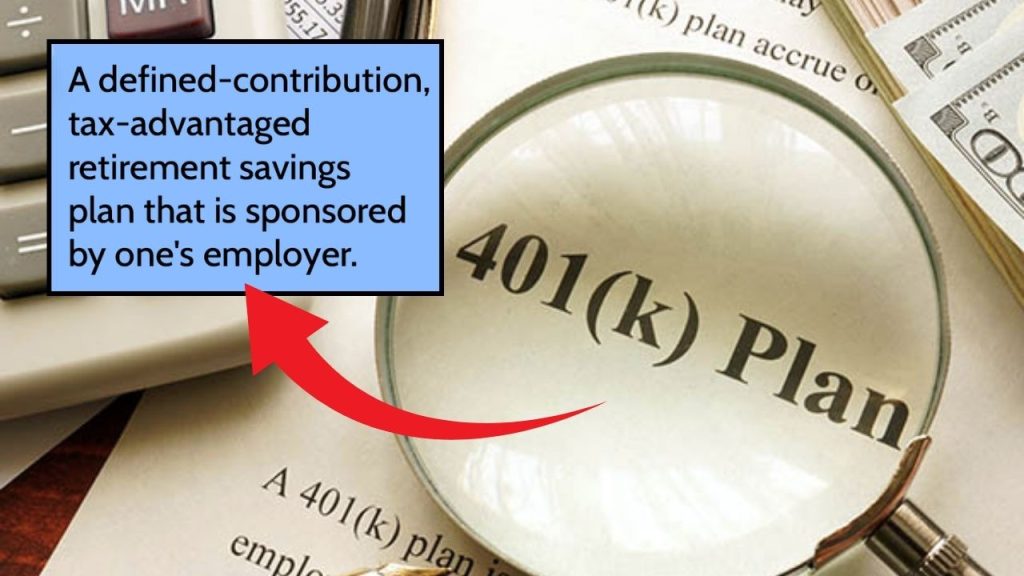President Donald Trump’s recent executive order marks a significant change in the world of retirement savings. It potentially allows millions of Americans to include cryptocurrencies, private equity, real estate, and other alternative assets within their 401(k) retirement accounts. This change aims to modernize and diversify retirement investment options, granting access to asset types that were usually reserved for the wealthy or institutional investors. However, it also introduces important new risks and complexities that savers should understand.

Trump Opens Door to Crypto in 401(k)s
| Highlight | Details |
|---|---|
| Executive Order Date | Signed by President Donald Trump on August 7, 2025 |
| New Investment Options | Cryptocurrencies (e.g., Bitcoin), private equity, real estate |
| Current U.S. Retirement Assets | Over $12 trillion held in 401(k) and similar plans |
| Regulatory Process Timeline | Months to years expected for federal agencies to revise and implement new rules |
| Average Returns of Alternatives | Private equity ~13% annually (historical), compared to ~10.6% for S&P 500 |
| Potential Risks | High volatility, illiquidity, higher fees, regulatory scrutiny, and litigation risk |
| Industry Response | Major asset managers support diversification but urge caution |
| Legal Framework | ERISA requires fiduciaries to act prudently and in employees’ best interests |
| Official Reference | White House Fact Sheet on 401(k) Alternative Assets |
President Trump’s executive order opens the door for cryptocurrencies, private equity, real estate, and other alternative assets to become part of 401(k) retirement plans. This represents a historic opportunity to diversify retirement portfolios beyond traditional stocks and bonds, potentially enhancing returns.
However, the transition will be slow and cautious, as regulators, employers, and plan providers navigate legal and operational challenges. Investors must weigh higher risks and volatility against the potential rewards and remain well-informed as the retirement investment landscape evolves.
Traditional investments will remain the backbone of most retirement plans for the foreseeable future, but alternative assets could increasingly complement them, reshaping how Americans save for retirement in the decades ahead.
What Is a 401(k), and Why Does This Executive Order Matter?
A 401(k) is a tax-advantaged retirement savings plan offered by employers. Employees can contribute part of their paycheck, often with employer matching, and invest those funds to grow over time until retirement. Traditionally, these plans have focused on safer, more familiar investments such as stocks, bonds, and mutual funds.
President Trump’s executive order directs federal agencies—including the Department of Labor (DOL) and Securities and Exchange Commission (SEC)—to rethink which investments qualify for inclusion in these plans. The goal is to allow alternative assets like cryptocurrencies, private equity funds, and real estate to be offered alongside traditional stocks and bonds.

This is a historic shift because alternative assets have been mostly unavailable in mainstream 401(k)s due to concerns over risk, volatility, illiquidity (difficulty selling quickly), and regulatory challenges.
Why Is This Shift Happening Now?
Several factors motivated this change:
- The private equity sector manages trillions of dollars and historically outperforms many stock indices, but most retail investors have lacked access through retirement plans.
- The cryptocurrency market has grown rapidly, gaining popularity especially among younger, tech-savvy workers who desire investment options beyond traditional assets.
- The executive order reflects a regulatory pivot away from previous caution, seeking to “democratize” access to these newer asset classes and provide opportunities for greater returns and diversification.
This move is supported by major industry players like BlackRock and TIAA, who see potential benefit in expanding options for investors while emphasizing the need for education and risk management.
How Will This Affect Your 401(k) and Retirement Strategy?
Step 1: Regulatory Rulemaking Comes First
The executive order does not immediately change your 401(k) options. Instead, federal agencies need to:
- Update regulations around what assets qualify under ERISA guidelines,
- Clarify fiduciary duties related to alternative investments,
- Implement investor protections and disclosures.
This process could take months or even years before new investment options become widely available.
Step 2: Slow Adoption by Employers and Plan Providers
Once new rules are finalized, retirement plan providers such as Vanguard, Fidelity, and T. Rowe Price will need to develop suitable funds that include these alternative asset classes. Employers, as plan sponsors, are legally responsible for prudently selecting investments and will likely be cautious due to possible litigation risks and operational challenges of offering illiquid or volatile assets.
Hence, widespread inclusion of crypto or private equity in 401(k)s will probably be gradual rather than immediate.
Step 3: Understand the Risks and Rewards
Each asset class comes with its own risk and reward profile:
| Asset Type | Potential Rewards | Potential Risks |
|---|---|---|
| Stocks & Bonds | Steady returns, liquidity, established history | Market volatility, interest rate fluctuations |
| Private Equity | Historically higher returns (~13% annually) | Low liquidity, long investment horizons, higher fees |
| Cryptocurrency | High growth potential, portfolio diversification | Extreme price swings, regulatory uncertainty, security vulnerabilities |
Experts typically recommend that alternative assets comprise only a small portion of your total retirement portfolio, especially for individuals closer to retirement who need stability.
Step 4: Get Educated and Seek Professional Advice
If your 401(k) eventually includes these options:
- Learn how the investment works and fees involved,
- Assess your personal risk tolerance and time horizon,
- Diversify across asset classes to avoid overexposure,
- Consult licensed financial advisors who specialize in retirement planning and alternative investments.
Practical Examples to Illustrate the Impact
Example 1: Young Tech Professional – Maria
Maria, a 30-year-old software engineer, is optimistic about crypto’s long-term growth. With the expanded options:
- She allocates 5% of her 401(k) to a Bitcoin fund,
- Keeps the majority in diversified traditional stocks and bonds,
- Monitors crypto market developments without panic over daily swings.
This approach balances growth potential with risk management.
Example 2: Near-Retirement Teacher – John
John, age 55, prefers preservation over aggressive growth. His strategy involves:
- Staying heavily invested in stable mutual funds and bonds,
- Avoiding volatile private equity and crypto offerings,
- Focusing on safeguarding principal and consistent income.
John’s choices reflect his shorter investment horizon and lower risk tolerance.
Retirees Face $18,000 Social Security Cut: What You Need to Know and How to Prepare in 2025
Social Security Payments Are Changing in August 2025 — Here’s the New Schedule You Need to Know
Social Security 2026 COLA Forecast Revealed — What It Means for You and How to Prepare
FAQs About Trump Opens Door to Crypto in 401(k)s
Q1: When will these alternative investments be available in my 401(k)?
A: Regulatory changes and employer adoption take time. It may be several months or years before these options appear in most plans.
Q2: Are cryptocurrencies a safe choice for retirement savings?
A: Cryptocurrencies carry high volatility and risk. They may fit a small part of a long-term, risk-tolerant portfolio but are generally not recommended as core holdings.
Q3: Will my employer be required to offer crypto and private equity options?
A: No. The executive order permits but does not mandate these options. Plan sponsors will decide whether and when to include them, often with caution.
Q4: What protections exist to prevent mismanagement?
A: ERISA requires fiduciaries to act prudently and in employees’ best interests. New regulations will clarify how trustees should handle alternative assets.
Q5: How can I learn more and prepare for these new options?
A: Follow updates from the Department of Labor, SEC, and consult professional advisers experienced in retirement and alternative investments.






